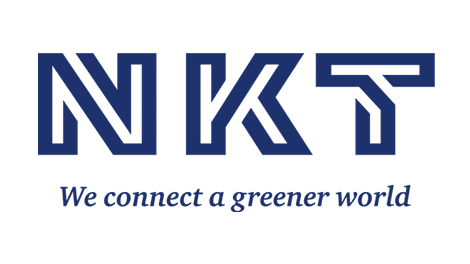NKT – Larger, longer and more efficient: 525 kV XLPE HVDC is becoming the preferred cable technology for long distance power transmission
In 2023, we have seen a technology shift in the high-voltage power cable market with 525 kV extruded XLPE power cable technology becoming the standard technology for several large cable projects supporting the green transition of Europe.
By Michael C. Hjorth, Chief Commercial Officer
Power cables are the backbone of the infrastructure driving the transition to renewable energy and are as such essential to reaching the global climate targets. An interconnected power grid is simply a prerequisite to ensure safe and reliable transmission of renewable energy and the trend is clear – transmission lines are becoming larger, longer and with an increasing focus on lower losses. This has been the key driver for the recent technology shift in the high-voltage power cable market where 525 kV XLPE HVDC (high-voltage direct current) cable technology is now becoming the standard for large on- and offshore projects.
Technology evolution
Back in 2020, the first steps were taken towards the ongoing transition to 525 kV HVDC technology when we won the first commercial orders for a 525 kV extruded HVDC cable system with XLPE insulation for the onshore German corridor projects SuedOstLink and SuedLink. 2023 has been the year, where the technology shift clearly has manifested itself in the market with several awards of large cable projects based on the 525 kV XLPE technology.
For NKT, such projects include the award of the world’s first order for extruded 525 kV HVDC submarine power cable systems for the IJmuiden Ver and Nederwiek Offshore Wind Zones in the Netherlands followed by the award of three specific offshore wind projects in TenneT’s 2GW program. Latest, we have won two interconnectors in Scotland with SSE Transmission and five projects in Germany with 50Hertz all based on 525 kV HVDC technology covering both on- and offshore projects.
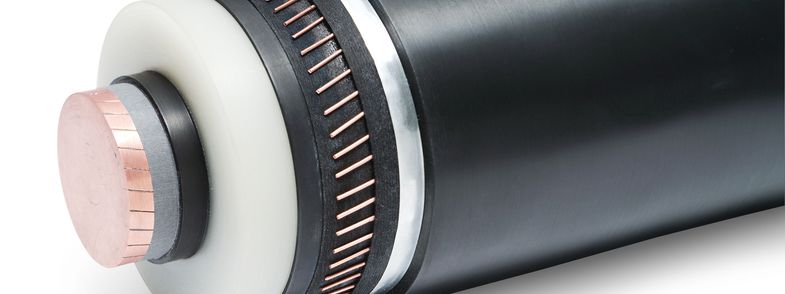
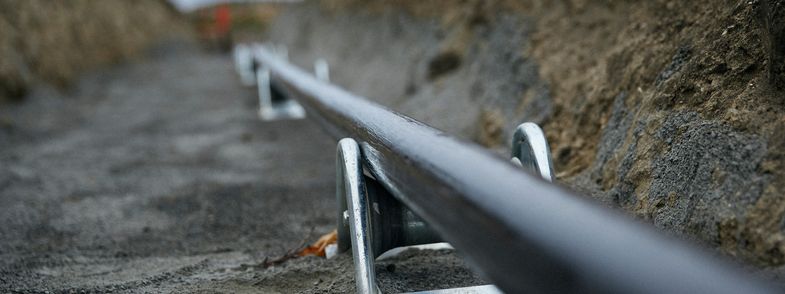
This technology transition is a natural development due to the increasing demand for transmission of larger amount of power over longer distances. A single pair of 525 kV extruded HVDC power cables can transmit enough power to supply approximately two million households. By implementing these power transmission highways into the electrical grid utilizing HVDC technology we can ensure the safe, efficient and low loss transport of electrical energy from wherever it is produced to wherever it will be required – no matter the physical distance. Here, the innovative and proven XLPE insulation is key as it has excellent DC insulation properties.
The development of DC XLPE technology
Since its introduction in the late 1990’ies, XLPE DC cables systems, together with the associated converter technology, have provided the fundamental platform for HVDC power transmission. The development and commercial introduction of XLPE HVDC cable systems starting at 80 kV level grew rapidly to 150 kV and was followed by 200 kV and subsequently 320 kV, which inherently also finally raised the transmission capacity towards and above1GW. These systems are all based on the same extruded cable technology platform and in order to reach even higher voltage levels, and thereby increased transmission capacity, a continuous improvement of the XLPE insulation material was needed. The improved material system together with NKT’s HVDC know-how and advanced field grading technology now provides an even stronger platform for reaching such higher voltage levels allowing transmission of 2GW per HVDC cable system.
What’s next?
As the transition to renewable energy is expected to accelerate the further development of an interconnected regionally, or in time even a globally, connected power grid needs to follow. This will create an increasing demand for transmission of larger amount of energy with low losses which will be driving the technology development and innovation. One natural next step following the 525 kV XLPE DC technology could be the commercialization of 640 kV XLPE DC onshore cable system which we launched in 2017 as the first in world. This development has been made in continuation of the 525 kV technology launched in 2014.
Efficient transmission of renewable power
A central part of the environmental footprint of any high-voltage power cable system is determined by the losses aggregated during the lifetime of the system. When using XLPE HVDC for transmission of renewable power the losses are very low. This means that almost all the power sent in to the cable also reach the end of the cable, ensuring a higher output of electricity to be fed to the transmission networks over the system’s lifetime. This ensures that power generated from wind, hydro or other renewable sources are used efficiently.
At NKT, we ensure that our cable system is manufactured with a low carbon footprint, all our factories operate on renewable electricity and we are constantly working to reduce the carbon footprint of our production, installation and supply chain.
If we – as a society – shall reach the target of being carbon neutral in Europe by 2050, all parties must contribute. At NKT, we are committed to do our part in making Europe a carbon neutral continent with manufacturing and installation of robust and reliable DC cable systems.
SourceNKT
EMR Analysis
More information on NKT: See the full profile on EMR Executive Services
More information on Claes Westerlind (President and Chief Executive Officer, NKT): See the full profile on EMR Executive Services
More information on Michael C. Hjorth (Members of the Global Leadership Team, Chief Commercial Officer, NKT): See the full profile on EMR Executive Services
More information on the SuedLink: https://www.tennet.eu/our-grid/onshore-projects-germany/suedlink/ + Germany wants to become climate neutral by 2045. By 2030, the share of renewable energies should increase to 80%. These ambitious goals of the federal government make demands on our power grid, because green electricity is mainly generated decentrally in the windy north and sunny south. In order to ensure a stable and secure power supply in the future, power grids must be adapted to the changed generation structure. Powerful DC lines such as SuedLink play a crucial role here. In accordance with legal requirements, SuedLink is planned as an underground cable project.
With a length of around 700 kilometers and four gigawatts of transmission capacity, SuedLink is the largest energy transition infrastructure project in Germany.
The output corresponds to about four nuclear power plants. This means that around ten million households can be supplied with electricity.
SuedLink consists of two high-voltage direct current (HVDC) transmission links: Project 3 from Brunsbüttel in the south of Schleswig-Holstein to Großgartach/Leingarten in the north of Baden-Württemberg and Project 4, which is partly parallel to project 3 from Wilster to Bergrheinfeld/West in Bavaria leads.

More information on SuedOstLink: https://www.tennet.eu/our-grid/onshore-projects-germany/suedostlink/ + SuedOstLink is a planned direct current line consisting of two projects. Project 5 runs between Wolmirstedt in Saxony-Anhalt and ISAR near Landshut in Bavaria. Project 5a runs between Klein Rogahn in Mecklenburg-Western Pomerania and also ISAR near Landshut in Bavaria. The SuedOstLink transports electricity from wind energy from northern and eastern Germany to the south. We at TenneT plan and build the Bavarian part of the line entirely as an underground cable. The transmission capacity for each of the two SuedOstLink projects is two gigawatts. We are currently planning the exact route. Project 5 is scheduled to go into operation in 2027 and project 5a in 2030.
More information on TenneT: https://www.tennet.eu + TenneT is a leading European grid operator. Committed to providing a secure and reliable supply of electricity 24 hours a day, 365 days a year, while helping to drive the energy transition in our pursuit of a brighter energy future – more sustainable, reliable and affordable than ever before. Lighting the way ahead together
Next time you turn on the lights, take a moment to think about where that power comes from. In the Netherlands and Germany, it was very likely brought to you by us, TenneT. We own and operate over 25,000 kilometres of high-voltage lines and cables.
As the Transmission System Operator (TSO) for the Netherlands, and a significant part of Germany, TenneT owns and operates over 25,000 kilometres of high-voltage lines and cables. We deliver electricity to 43 million domestic and business users, safely and reliably, 24 hours a day and 365 days a year. With over 7,400 employees in two countries, we are driven by our mission to ensure the lights stay on and that power is available, at the flick of a switch, whenever and wherever you need it.
To do this, we design, build, maintain and operate a high-voltage grid stretching across land and sea. This carries electricity from where it is made – including a rapidly increasing proportion of wind and solar energy – to where it is used. We carry it over ground, underground, under the sea and across borders, over our rapidly expanding high-voltage grid. With a service level as high as 99.99963 %, we are one of the best in the world at our job.
More information on Manon van Beek (CEO, TenneT): https://www.tennet.eu/about-tennet/our-organisation/executive-board + https://www.linkedin.com/in/manonjjvanbeek/
More information on Tim Meyerjürgens (Chief Operations Officer, TenneT): https://www.tennet.eu/company/profile/executive-board/ + https://www.linkedin.com/in/timmeyerj%C3%BCrgens/
More information on SSEN Transmission (Scottish and Southern Electricity Networks): https://www.ssen-transmission.co.uk/ + We are SSEN Transmission (the trading name for Scottish Hydro Electric Transmission) and are part of the SSE plc Group.
We are responsible for the electricity transmission network in the north of Scotland, maintaining and investing in the high voltage 132kV, 220kV, 275kV and 400kV electricity transmission network.
Our network consists of underground and subsea cables, overhead lines on wooden poles or steel towers, and electricity substations. It extends over a quarter of the UK’s land mass, crossing some of its most challenging terrain.
Our first priority is to provide a safe and reliable supply of electricity to our communities. We do this by taking the electricity from generators and transporting it at high voltages over long distances through our transmission network for onwards distribution to homes and businesses in villages, towns and cities.
Our operating area is home to vast renewable energy resources and this is being harnessed by wind, hydro and marine generation. Working closely with National Grid, the GB transmission System Operator, we also enable these electricity generators to connect to the transmission system by providing their connections and allowing the electricity generated by them to be transported to areas of demand across the country.
Scotland’s transmission network has a strategic role to play in supporting delivery of the UK and Scotland’s Net Zero targets. We’re already a mass exporter of renewable energy, with around two thirds of power generated in our network area exported to demand centres further south. By 2050, the north of Scotland is expected to need 40GW of low carbon energy capacity to support net zero delivery. For context, we currently have around 7GW of renewable generation connected in the north of Scotland.
As a natural monopoly, we are closely regulated by the GB energy regulator, Ofgem, who determines how much revenue we are allowed to earn for constructing, maintaining and renovating our transmission network in the north of Scotland. These costs are shared between all those using the transmission system, including generation developers and electricity consumers.
As a stakeholder-led business, SSEN Transmission is committed to inclusive stakeholder engagement, and we conduct this at an ‘Advanced’ level as assessed by AccountAbility, the international consulting and standards firm.
More information on Alistair Phillips-Davies (Chief Executive, SSE Plc.): https://www.sse.com/who-we-are/our-leadership/group-executive-committee/ + https://www.linkedin.com/in/alistair-phillips-davies-14213871/
More information on 50Hertz: https://www.50hertz.com/en/ + 50Hertz operates the electricity transmission system in the north and east of Germany, which it expands as needed for the energy transition. Our extra high voltage grid has an electrical circuit length of more than 10,000 kilometres, or the distance between Berlin and Rio de Janeiro. The 50Hertz control area covers the german federal states of Brandenburg, Mecklenburg-Western Pomerania, Saxony, Saxony-Anhalt and Thuringia, as well as the city states of Berlin and Hamburg. Within these regions, 50Hertz and its 1,600 employees ensure that 18 million people are supplied with electricity around the clock. 50Hertz is a forerunner in the field of secure integration of renewable energy: Until 2032 we want to integrate 100 percent securely. The shareholders of 50Hertz are the Belgian Elia Group (80 per cent) and the KfW bank group with 20 per cent. As a European transmission system operator, 50Hertz is a member of the European association ENTSO-E.
The Elia Group has legally reorganized itself. The recently founded subsidiary Elia Transmission Belgium SA/NV (“Elia Transmission Belgium” (ETB)) has taken over the Belgian regulated activities of “Elia System Operator SA/NV”. Elia System Operator SA/NV was renamed “Elia Group SA/NV” and remains the listed parent company. The Elia Group owns 100 percent of ETB, 50 percent of Elia Grid International and 100 percent of Eurogrid International SA/NV (Eurogrid International). Eurogrid International holds 80 percent of the shares in Eurogrid GmbH (“Eurogrid”). The remaining 20 percent of Eurogrid is held by the Kreditanstalt für Wiederaufbau AöR (KfW) via its subsidiary Selent Netzbetreiber GmbH. In fiscal 2019, Eurogrid mainly arranged and secured the financing of the construction and operating activities of 50Hertz.
Eurogrid holds 100 percent of the shares in 50Hertz Transmission GmbH. 50Hertz Transmission GmbH, in turn, has an interest in 50Hertz Offshore GmbH (“50Hertz Offshore”) and other companies such as Elia Grid International, European Energy Exchange AG (“EEX”), Joint Allocation Office SA (“JAO”), TSCNET Services GmbH (“TSCNET”) and Coreso SA (“Coreso”). Under the name 50Hertz we hereafter combine 50Hertz Transmission GmbH and its wholly owned subsidiary 50Hertz Offshore GmbH.
More information on Stefan Kapferer (Chief Executive Officer, Elia Group’s Second Subsidiary, Transmission System Operator 50Hertz): https://www.eliagroup.eu/en/about-elia-group/corporate-bodies + https://www.50hertz.com/en/News/FullarticleNewsof50Hertz/id/6168/stefan-kapferer-in-office-as-new-50hertz-ceo + https://www.linkedin.com/in/stefan-kapferer-b44a5b117/
EMR Additional Notes:
- Low-Voltage (LV):
- The International Electrotechnical Commission (IEC) defines supply system low voltage as voltage in the range 50–1000 V AC or 120–1500 V DC.
- Medium-Voltage (MV):
- Medium-voltage circuit breakers rated between 1 and 35/72 kV.
- High-Voltage (HV):
- The International Electrotechnical Commission define high voltage as above 1000 V for alternating current, and at least 1500 V for direct current.
- Super High-Voltage:
- Is >300kV.
- Ultra High-Voltage:
- Is >1.000kV.
- XLPE:
- Cross-linked polyethylene, commonly abbreviated PEX, XPE or XLPE, is a form of polyethylene with cross-links.
- XLPE or Cross-linked polyethylene is a thermoset insulation material. Crosslinking polymers is a process which changes the molecular structure of the polymer chains so that they are more tightly bound together and this crosslinking is done either by chemical means or physical means.
- XLPE is suitable for voltage ranges from low to extra high voltage, surpassing other insulation materials such as PVC, Ethylene Propylene Rubber (EPR) and silicone rubbers. Cross-linking the polyethylene also enhances the chemical and oil resistance at elevated temperatures and makes it suitable for use as a Low Smoke Zero Halogen material.
- AC (Alternating Current) & DC (Direct Current) & UC (Universal Current):
- Direct current (DC) is an electric current that is uni-directional, so the flow of charge is always in the same direction. As opposed to alternating current, the direction and amperage of direct currents do not change. It is used in many household electronics and in all devices that use batteries.
- Direct current has many uses, from the charging of batteries to large power supplies for electronic systems, motors, and more. Very large quantities of electrical energy provided via direct-current are used in smelting of aluminum and other electrochemical processes.
- in contrast to AC power, DC power is entirely made up of active power, meaning that there are almost no losses due to the capacitance of wires when DC power travels long distances. In fact, high voltage AC transmission systems have losses of 7% to 15% with aboveground transmission.
- Alternating Current is used in homes as Direct current can not be easily stepped up or stepped down with the help of transformers whereas alternating current can easily be converted from low voltage to high voltage or vice-versa with the help of transformers.
- “UC” is used for “Universal Current”, that translates to “either DC or AC”. So a 24 V UC input can accept either 24 V AC or 24 V DC.
- Kilovolt-Amperes (kV):
- Kilovolt or “kV” means a unit of potential difference equal to 1,000 volts. Kilovolt or “kV” means the potential difference between two points on a conductor carrying a current of one ampere when the power dissipated between the two points is one kilovolt-ampere. Kilovolt means one thousand volts (kV).
- Kilovolt (kVA):
- kVA stands for Kilo-volt-amperes – a term used for the rating of an electrical circuit. kVA is the product of the circuits maximum current and voltage rating. It is also known as Apparent Power.
- kW is the unit of real power and kVA is a unit of apparent power (or real power plus re-active power). The power factor, unless it is defined and known, is therefore an approximate value (typically 0.8), and the kVA value will always be higher than the value for kW.
- A kVA is 1,000 volt-amps. It’s what you get when you multiply the voltage (the force that moves electrons around a circuit) by the amps (electrical current).
- Kilowatt (kW):
- A kilowatt is simply a measure of how much power an electric appliance consumes—it’s 1,000 watts to be exact. You can quickly convert watts (W) to kilowatts (kW) by diving your wattage by 1,000: 1,000W 1,000 = 1 kW.
- Megawatt (MW):
- One megawatt equals one million watts or 1,000 kilowatts, roughly enough electricity for the instantaneous demand of 750 homes at once.
- Gigawatt (GW):
- A gigawatt (GW) is a unit of power, and it is equal to one billion watts.
- According to the Department of Energy, generating one GW of power takes over three million solar panels or 310 utility-scale wind turbines
- Grid, Microgrids and DERs:
- The power grid is a network for delivering electricity to consumers. The power grid includes generator stations, transmission lines and towers, and individual consumer distribution lines.
- The grid constantly balances the supply and demand for the energy that powers everything from industry to household appliances.
- Electric grids perform three major functions: power generation, transmission, and distribution.
- A microgrid is a small-scale power grid that can operate independently or collaboratively with other small power grids. The practice of using microgrids is known as distributed, dispersed, decentralized, district or embedded energy production.
- Smart Grid is any electrical grid + IT at all levels . Micro Grid is a group of interconnected loads and DERs (Distributed energy resources) within a clearly defined electrical and geographical boundaries witch acts as a single controllable entity with respect to the main grid.
- Distributed Energy Resources (DERs) are small-scale electricity supply (typically in the range of 3 kW to 50 MW) or demand resources that are interconnected to the electric grid. They are power generation resources and are usually located close to load centers, and can be used individually or in aggregate to provide value to the grid.
- Common examples of DERs include rooftop solar PV units, natural gas turbines, microturbines, wind turbines, biomass generators, fuel cells, tri-generation units, battery storage, electric vehicles (EV) and EV chargers, and demand response applications.
- Distributed Energy Resources Management systems (DERMS) are platforms which helps mostly distribution system operators (DSO) manage their grids that are mainly based on Distributed Energy Resources (DER).
- DERMS are used by utilities and other energy companies to aggregate a large energy load for participation in the demand response market. DERMS can be defined in many ways, depending on the use case and underlying energy asset.
- HVDC Light:
- HVDC Light is the successful and environmentally-friendly way to design a power transmission system for a submarine cable, an underground cable, using over head lines or as a back-to-back transmission. HVDC Light is HVDC technology based on voltage source converters (VSCs).
- HVDC Light is designed to transmit power underground and underwater, also over long distances. It offers numerous environmental benefits, including “invisible” power lines, neutral electromagnetic fields, oil-free cables and compact converter stations.
- As its name implies, HVDC Light is a dc transmission technology. However, it is different from the classic HVDC technology used in a large number of transmission schemes. Classic HVDC technology is mostly used for large point-to-point transmissions, often over vast distances across land or under water. It requires fast communications channels between the two stations, and there must be large rotating units – generators or synchronous condensers – present in the AC networks at both ends of the transmission. HVDC Light consists of only two elements: a converter station and a pair of ground cables. The converters are voltage source converters, VSC’s. The output from the VSC’s is determined by the control system, which does not require any communications links between the different converter stations. Also, they don’t need to rely on the AC network’s ability to keep the voltage and frequency stable. These feature make it possible to connect the converters to the points bests suited for the AC system as a whole.
- HVDC (High-Voltage Direct Current):
- Key enabler for a carbon-neutral energy system. It is highly efficient for transmitting large amounts of electricity over long distances, integration of renewables and interconnecting grids, opening up for new sustainable transmission solutions.
- HVDC Links:
- The first successful HVDC experimental long distance line (37 miles) was made at Munich, Germany in 1882 by Oskar Von Miller and fellow engineers.
- HVDC allows power transmission between AC transmission systems that are not synchronized. Since the power flow through an HVDC link can be controlled independently of the phase angle between source and load, it can stabilize a network against disturbances due to rapid changes in power.
- An HVDC line has considerably lower losses compared to HVAC over longer distances.

- Neu Connect (the first power interconnection between Great Britain and Germany): https://neuconnect-interconnector.com +
- The NeuConnect Interconnector will create the first direct power link between Germany and Great Britain, connecting two of Europe’s largest energy markets for the first time. Around 720km of land and subsea cables will form an ‘invisible highway’ allowing up to 1.4GW of electricity to move in either direction, enough to power up to 1.5 million homes over the life of the project.
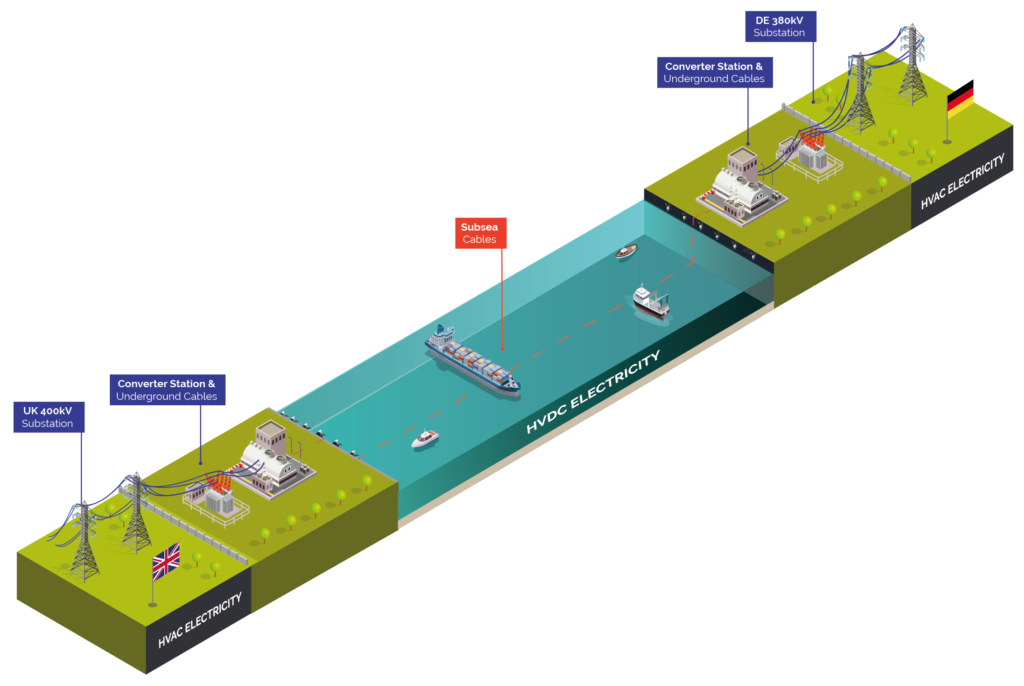
- The Tyrrhenian Link: https://www.terna.it/en/projects/public-engagement/Tyrrhenian-link +
- Connecting Sicily with Sardinia and the Italian peninsula via a double underwater cable: a new electricity corridor at the centre of the Mediterranean; the Tyrrhenian Link. At 950 kilometres long and with a capacity of 1000 MW, this is an infrastructure initiative of international significance, another step towards a more sustainable energy future. The link will improve electricity exchange capacity, facilitate the development of renewable energy sources, and the reliability of the grid.
- The overall project involves two sections: EAST from Sicily to Campania and WEST from Sicily to Sardinia.
- The East section is 480 kilometres long and connects the Fiumetorto landing point, in the municipality of Termini Imerese in Sicily, with the landing point in Torre Tuscia Magazzeno, near Battipaglia in Campania.
- The WEST section is approximately 470 kilometres long and connects the Fiumetorto landing point to the one in Terra Mala, in Sardinia.

- The Viking Link: https://viking-link.com +
- World’s longest power interconnection. the Viking Link is a 1400 MW high voltage direct current (DC) electricity link between the British and Danish transmission systems connecting at Bicker Fen substation in Lincolnshire and Revising substation in southern Jutland, Denmark.

- The North Sea Link: https://northsealink.com/ + North Sea Link is a 720 kilometre subsea interconnector linking the electricity systems of the UK and Norway. The 1400 megawatt interconnector stretches from Blyth in the UK, across the North Sea, to Kvilldal in Norway.
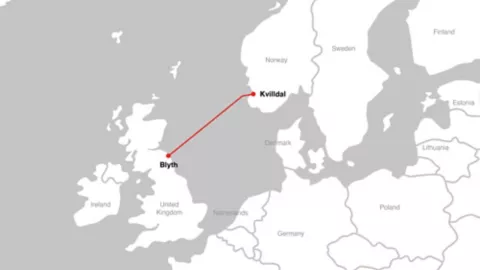
- The Hertel–New York interconnection line: https://www.hydroquebec.com/projects/hertel-new-york-interconnection/ + The Hertel–New York interconnection line project aims to supply clean, renewable energy to New York City. In Québec, the project involves the construction of a line that will span 57.7 km (56.1 km underground and 1.6 km underwater). This 400-kV direct current line will connect Hertel substation in La Prairie to an interconnection point in the Rivière Richelieu at the Canada–United States border.

- The Biscay Gulf Project: https://www.inelfe.eu/en/projects/bay-biscay + The electricity interconnection between Gatika (Spain) and Cubnezais (France) will be the first fundamentally submarine interconnection between Spain and France. This project will increase the exchange capacity from 2,800 to 5,000 MW, improving the safety, stability and quality of electricity supply between the two countries and also with the rest of Europe.
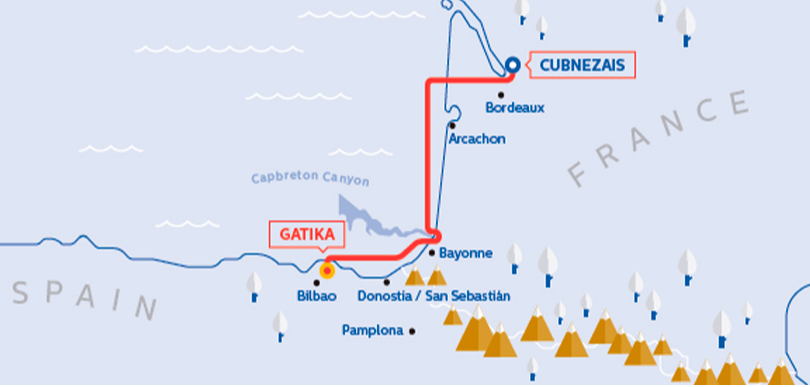
- The Eastern Green Link 2 (EGL2): https://www.ssen-transmission.co.uk/projects/project-map/eastern-green-link-2/ + The Eastern Green Link 2 project is a proposal to install a sub-sea high-voltage direct current (HVDC) cable from Sandford Bay, at Peterhead, to Drax in England. There is currently a large amount of forecasted generation that will require connection to the electricity network in the coming years and as such we are proposing several upgrades to the transmission network across the north of Scotland to facilitate this. The Eastern HVDC Link will play a key role in helping achieve our Net-Zero targets.
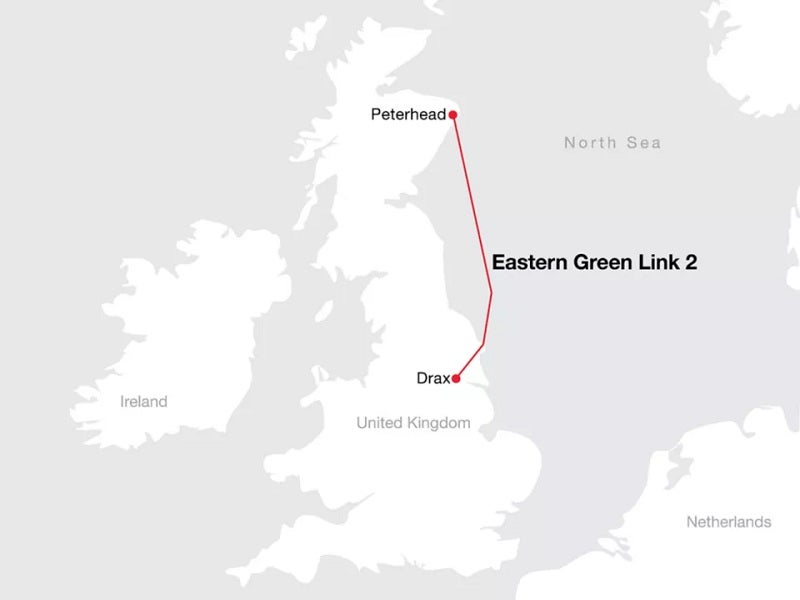
- The EuroAsia Interconnector: https://euroasia-interconnector.com/ + EuroAsia Interconnector Limited is the official EU project developer of the 2,000MW electricity interconnector between Israel, Cyprus, Greece and Europe. The EuroAsia Interconnector is a leading European Project of Common Interest (PCI) labelled as an EU “electricity highway” connecting the national electricity grids of Israel, Cyprus and Greece through a 1,208 km subsea HVDC cable.
- The EuroAsia Interconnector comprises the electricity interconnection between the grids of Israel, Cyprus, Greece through a subsea DC cable and with HVDC onshore converter stations at each connection point, with a total capacity of 2000MW. The project is an energy highway bridging Asia and Europe, with a total length of 1,208 km. It creates a reliable alternative route for the transfer of electric energy to and from Europe.


